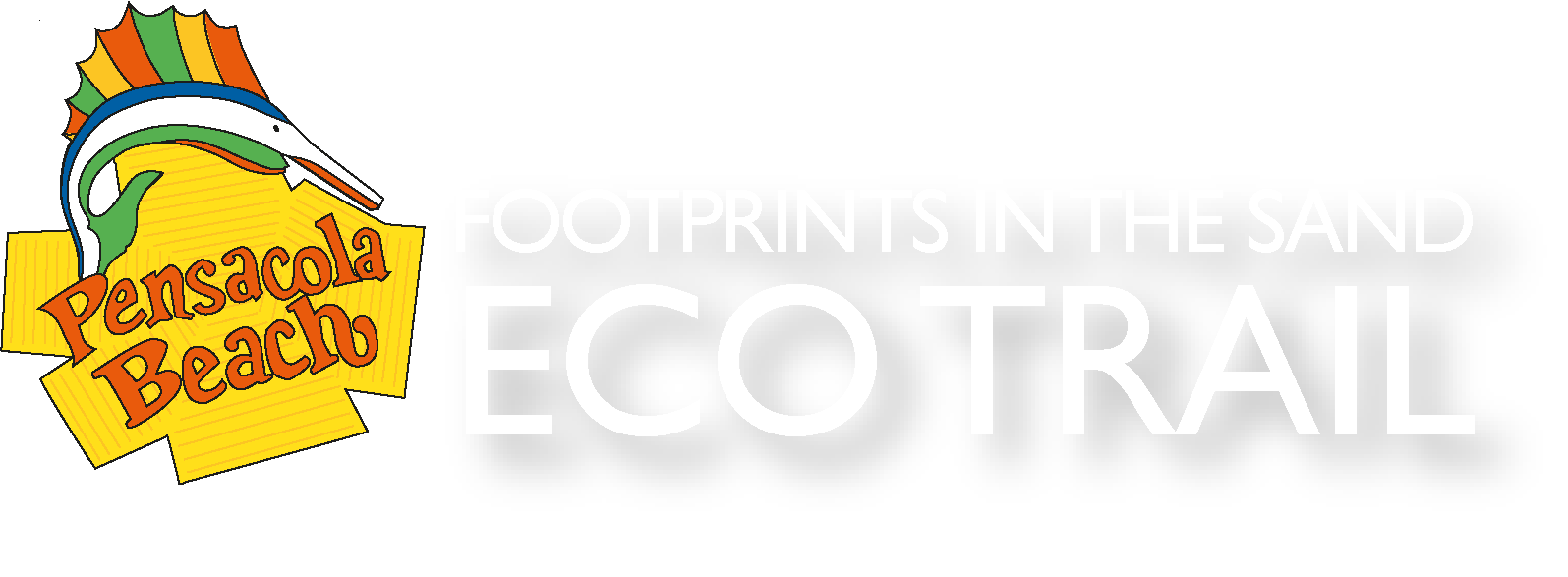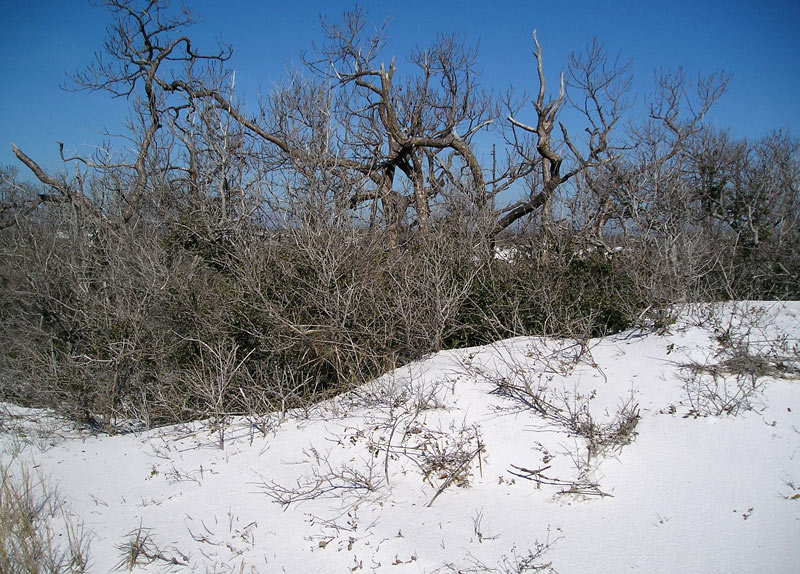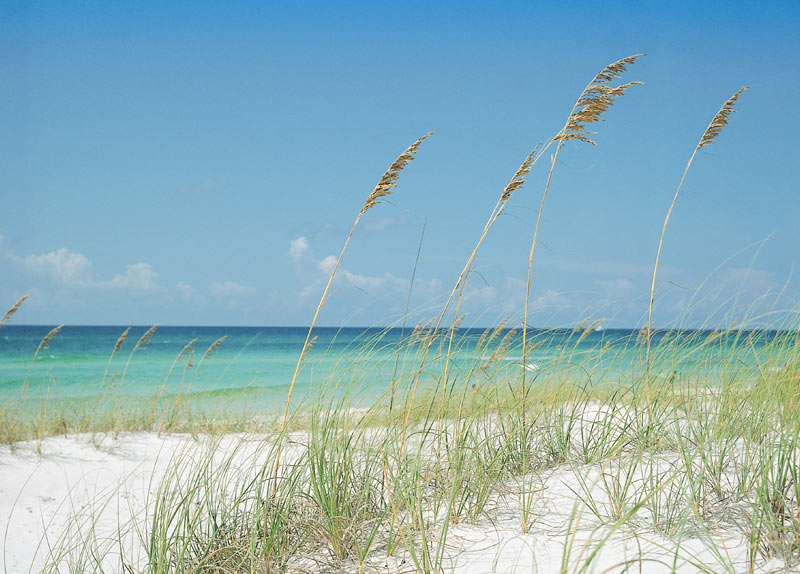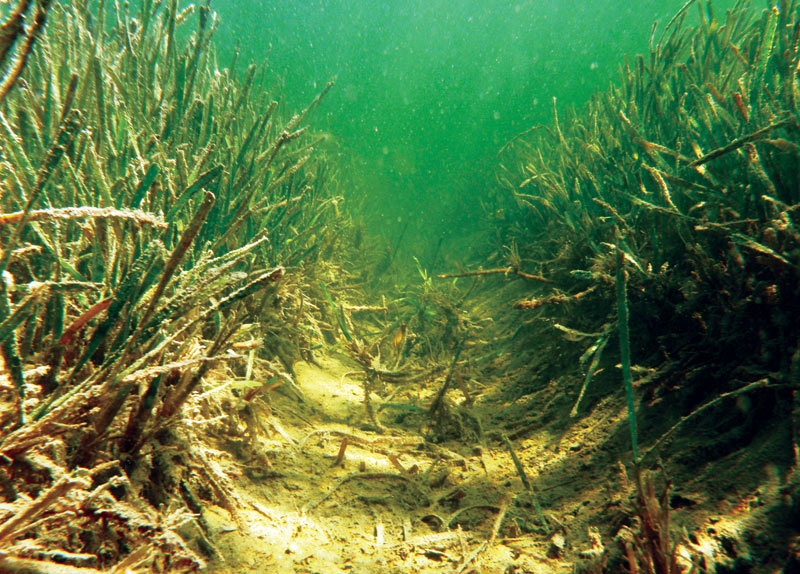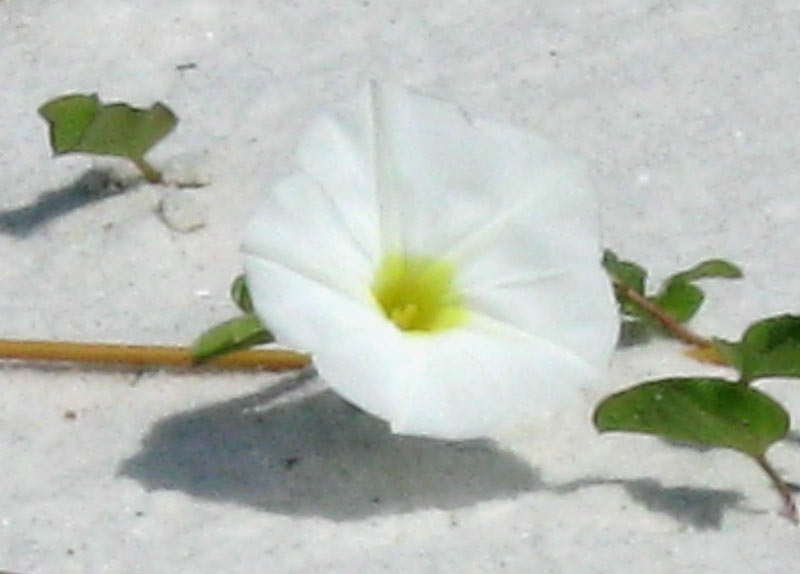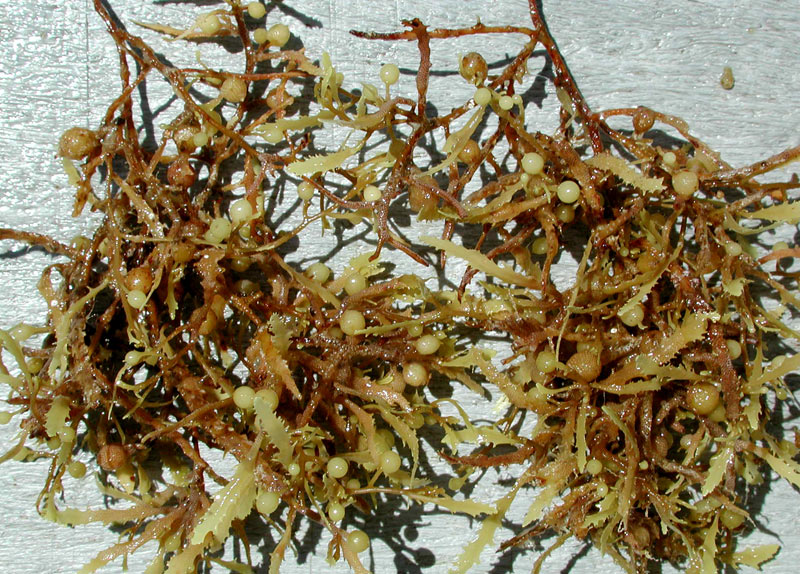Sea Oats © Harry Purcell
PLANTS
With all the interesting wildlife on and around the island, plants often just fade into the background. However, they fulfill many crucial ecosystem functions. Shallow-water seagrass beds cradle many juvenile marine animals, providing both food and shelter. Seagrasses are a primary food source for grazing green sea turtles and manatees. The offshore seaweed known as sargassum provides a camouflaged habitat for numerous marine creatures and shelters young sea turtles, increasing their chance of survival.
Moving away from the Gulf and cross the island to the Sound, there are distinct plant zones that are home to vegetation adapted to the wind, sun, and salt air. Sea oats are probably the most recognizable of the grasses on Pensacola Beach. Sea oats are the anchors for the entire dune system, with roots that can grow up to 40 feet deep. Like other dune plants, underground stems trap and hold sand providing dune stabilization. Their wheat-like seed heads are also a food source for wildlife. Something as prickly as a cactus (including its easier-to-eat fruit) can also provide shelter and food to small mammals and birds in this desert-like environment.
Away from the developed areas on Pensacola Beach are native trees and shrubs contributing their own ecosystem functions. They serve as nesting sites and provide shelter and food. Hopefully you will have a chance to get out into the scrub of the island to look for some of our native inhabitants or migrant visitors. Even if you venture no further than the beachfront, the seaweed on the beach or the sea oats on the dunes are all part of experiencing a unique environment.
This section was written by Carrie Stevenson, the Coastal Sustainability agent for Escambia County. The University of Florida’s Institute of Food and Agricultural Science (UF/IFAS) partners with coastal counties (including Escambia County) to provide education, research, outreach and extension programs. You may reach her at ctsteven@ufl.edu and find out more at https://sfyl.ifas.ufl.edu/escambia.
